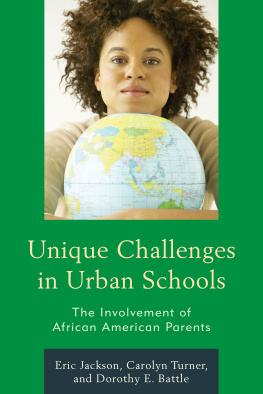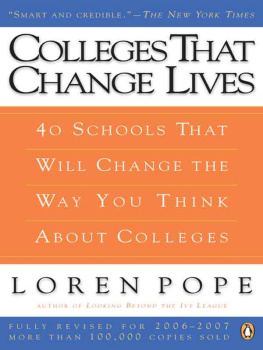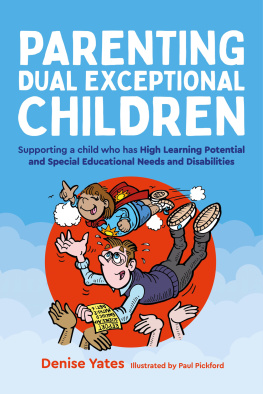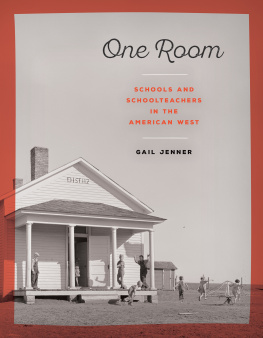Routledge Library Editions: Children and Disability
Volume 2
THE DISABLED SCHOOLCHILD
The Disabled Schoolchild
A study of integration in primary schools
Elizabeth M. Anderson
First published in 1973
by Methuen & Co Ltd
This edition first published in 2016
by Routledge
2 Park Square, Milton Park, Abingdon, Oxon OX14 4RN
and by Routledge
711 Third Avenue, New York, NY 10017
Routledge is an imprint of the Taylor & Francis Group, an informa business
1973 Elizabeth M. Anderson
All rights reserved. No part of this book may be reprinted or reproduced or utilised in any form or by any electronic, mechanical, or other means, now known or hereafter invented, including photocopying and recording, or in any information storage or retrieval system, without permission in writing from the publishers.
Trademark notice : Product or corporate names may be trademarks or registered trademarks, and are used only for identification and explanation without intent to infringe.
British Library Cataloguing in Publication Data
A catalogue record for this book is available from the British Library
ISBN: 978-1-138-96230-9 (Set)
ISBN: 978-1-315-64761-6 (Set) (ebk)
ISBN: 978-1-138-10128-9 (Volume 2) (hbk)
ISBN: 978-1-138-10145-6 (Volume 2) (pbk)
ISBN: 978-1-315-65692-2 (Volume 2) (ebk)
Publisher's Note
The publisher has gone to great lengths to ensure the quality of this reprint but points out that some imperfections in the original copies may be apparent.
Disclaimer
The publisher has made every effort to trace copyright holders and would welcome correspondence from those they have been unable to trace.
The publishers would like to make it clear that the views and opinions expressed, and language used in the book are the author's own and a reflection of the times in which it was published. No offence is intended in this edition.
THE DISABLED SCHOOLCHILD
A study of integration in primary schools
ELIZABETH M. ANDERSON
METHUEN & CO LTD
11 New Fetter Lane, London EC4P 4EE
First published 1973 by Methuen & Co Ltd
11 New Fetter Lane, London EC4
Reprinted I975 and 1976
1973 Elizabeth M. Anderson
Printed Offset Litho in Great Britain by
Cox & Wyman Ltd, Fakenham, Norfolk
ISBN (hardbound) 0 416 78180 2
ISBN (paperback) 0 416 78190 X
This title is available in both hardbound and paperback editions. The paperback edition is sold subject to the condition that it shall not, by way of trade or otherwise, be lent, resold, hired out or otherwise circulated without the publisher's prior consent in any form of binding or cover other than that in which it is published and without a similar condition including this condition being imposed on the subsequent purchaser.
Distributed in the US A by
HARPER & ROW PUBLISHERS INC.
BARNES & NOBLE IMPORT DIVISION
Contents
The author and publishers would like to thank Her Majesty's Stationery Office for permission to reproduce statistical material from The Health of the Schoolchild (1972) in .
by Professor Jack Tizard
This is an excellent book. Miss Anderson is concerned with the complex educational and social problems of children who are physically disabled. She takes as her starting point the current educational doctrine, to which we all subscribe, that 'no handi capped child should be sent to a special school who can be satis factorily educated in an ordinary school' and she examines its implications. How does it and how can it work out in practice? Is the concept of integration educationally valid, or is it something that sounds enlightened only to those who have not examined it in detail? What demands are placed upon a school which puts a severely disabled child into an ordinary class, and what extra facilities does a classroom teacher require to deal competently and sympathetically with his problems? Can the handicapped child himself cope educationally and socially in an ordinary school? What are the attitudes of his non-handicapped peers towards him? What about contacts between home, school and the medical services? What lessons for educational policy can we learn from the attempts being made by some local educational authorities in this country, and in a much more systematic way in Scandinavia, to provide special education in ordinary schools and classes?
All of us have opinions on these matters, but for the most part our knowledge is limited and our views are not well based. Moreover, as this study shows, the conventional wisdom is a pretty poor guide to the planning of services. Thus, to take only one example of the findings presented here, the severity of a child's physical handicap bears little or no relation to his educational progress in an ordinary classroom, to his social adjustment in it or to his popularity among his classmates. A much more significant factor, one which however is not represented in the current DES 'categories' of handicapped pupils, is whether or not the brain is involved in the handicap. It is children with disorders affecting the central nervous system who present the greatest educational problems in ordinary schools and for that matter in special schools also.
Miss Anderson's data come from an intensive study of ninety-nine moderately or severely disabled children who are being educated in ordinary primary schools. Interviews with parents and teachers were also carried out, and a control group of ordinary classmates of the handicapped children was also examined to provide a check on the validity of many of the findings. The study includes a wealth of case material which adds to its richness.
The book is however, more than a research report, for Miss Anderson draws upon her wide knowledge of the field to present the educational issues which confront the handicapped child, his family and the educational and social services which help them to cope with education and with life. One of the great merits of the book is that it recognizes that there is no one way to achieve integration. Thus it presents in some detail many examples of different ways of solving the problems of providing adequate educational services, in different contexts and using different resources.
The type of educational provision, whether in special school, special class or ordinary class, sets the boundaries to the handicapped child's environment. It is for this reason that many parents of handi capped children and many voluntary bodies concerned with their wellbeing are pressing local authorities to do more than has been done in the past to make it possible for handicapped children to be educated alongside their ordinary peers. We see today that what appeared out of the question a decade or two ago is perfectly feasible: many severely disabled children can actually enjoy and profit from and prefer an education alongside ordinary classmates if conditions are right.
This being so, the proposals for special education in the white paper Education: a framework for expansion are disappointing. The government is proposing 'a rapid acceleration of the special school building programme' from 11 million to 19 million over the next four years. No mention is made however of provision in ordinary schools and nothing is said about research which might suggest alternative forms of educational provision for handicapped children. At a time when new concepts of special education are becoming more and more widely accepted, the white paper offers only old recipes.









